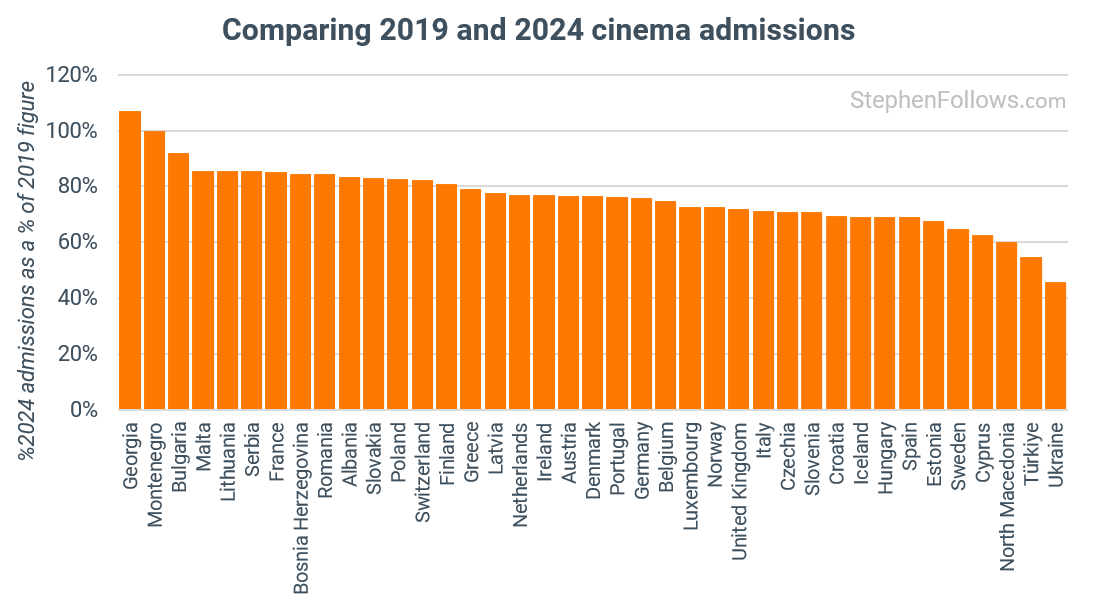Cinema admissions are recovering across Europe, but not in the way many expected.
National film cultures, policy choices, and industry structures have all shaped very different paths back to the big screen.
Across the 30+ countries I looked at, the following factors seemed most relevant when considering the level to which the cinema admissions bounced back from Covid:
-
Local films helped some countries fill the gap left by Hollywood delays. France bounced back faster than most thanks to a strong local film industry. With nearly 40% of 2023 admissions going to French films, including major hits like Astérix & Obélix, it kept audiences coming even when US titles were thin.
-
Streaming took a bigger bite in countries where it’s already part of daily life. Sweden has high-speed internet and early adoption of streaming services, which meant many people grew accustomed to watching films at home. As cinemas reopened, fewer people felt the need to return.
-
People returned faster where cinema-going was already a strong habit. In Georgia, cinema-going has become a valued social activity in recent years. That enthusiasm helped push admissions 7% higher than 2019 levels, despite a full year of closures.
-
Extended lockdowns didn’t always hurt if reopening was done well. Spain had strict and extended restrictions on cinemas, and once reopened, many audiences didn’t return. The loss of habit, combined with economic strain, left Spain stuck at just 75% of pre-COVID levels.
-
Government funding helped keep cinemas open and attract audiences. The French authorities provided cinemas with direct financial support and ran national campaigns, such as discounted ticket days.
-
When money is tight, people stop going to the cinema. Türkiye saw inflation climb to 65% in 2023, making cinema tickets unaffordable for many. Even with popular local films, admissions were less than half their pre-pandemic levels.
Across all European nations, only Georgia saw an increase in admissions between 2019 and 2024, from 1.4 million tickets to 1.5 million, respectively. On the surface, this might seem like a slight increase, but in the context of a global downturn in theatrical attendance, any growth is notable.

Even among countries that haven’t quite passed their 2019 numbers, a few are getting close. Bulgaria (92%), Lithuania (86%), and Serbia (85%) are among the top performers.
The standout performances challenge the idea that only large or wealthy markets can sustain strong cinema attendance. In this case, size has not equalled speed of recovery.
Several European countries have experienced strong recoveries, reaching between 80% and 90% of their pre-pandemic admissions levels. These include France (85%), Romania (85%), Serbia (85%), Lithuania (86%), and Bulgaria (92%).


